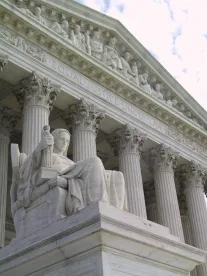In a closely watched case with potential impacts across a broad swath of the electric energy industry, on January 25, 2016, the U.S. Supreme Court reversed the D.C. Circuit’s May 2014 ruling in EPSA v. FERC and instead upheld the Federal Energy Regulatory Commission’s (FERC) demand response rule, Order No. 745, thereby affirming FERC’s jurisdiction to regulate wholesale markets. FERC issued Order No. 745 with the aim of encouraging participation of demand resources – generally industrial and other large energy users that can reduce or forego energy consumption during certain periods – in wholesale markets administered by FERC by allowing such demand resources to bid their reduced energy consumption for compensation at the same price and in the same markets as generating resources.
Several Independent Power Producers (IPPs), which compete directly with demand resources under Order No. 745, led by the Electric Power Supply Association (EPSA), challenged FERC’s Order No. 745 on the grounds that a FERC-supervised demand response market necessarily intruded into the area of retail rate regulation, which is exclusively the jurisdiction of the states. EPSA prevailed at the D.C. Circuit, which rejected FERC’s Order No. 745 in a decision issued on May 27, 2014. By a 6-2 majority (Justice Alito did not participate), the Supreme Court overturned the D.C. Circuit. The Court’s opinion, authored by Justice Kagan, validated Order No. 745, concluding that FERC acted within its authority. Specifically, Court found that:
-
Order No. 745 easily meets the Federal Power Act (FPA) standard of being a practice that “directly affects wholesale rates” because compensating demand resources necessarily lowers wholesale electricity prices. Slip Op. at 14-17;
-
Order No. 745 does not regulate retail sales, even though it may affect the quantity or terms of retail sales. The Court reasons that wholesale energy transactions of many varieties have consequences at the retail level without legal consequence. Moreover, FERC had taken care not trample on state regulatory authority, evidenced by the fact that FERC’s demand response regime permits retail purchasers to participate in wholesale markets only if the state regulators do not forbid them from doing so. Slip Op. at 17-25.
-
EPSA’s position would subvert the FPA by rendering the entire practice of wholesale demand response outside of FERC’s jurisdiction, as well as outside the authority of states to regulate. The effect of such a vacuum of regulatory jurisdiction would halt a practice that enables FERC to fulfill its statutory duty to hold down wholesale prices and enhance reliability. Slip Op. at 25-29.
-
FERC decision to compensate demand resources at the same Locational Marginal Price (LMP) that is paid to generating resources was a reasonable one. Slip Op. at 29-33.
The thrust of the decision is that the Court was unconvinced of the Respondents principal argument; namely, that permitting a FERC-supervised demand response market necessarily intruded into the state’s preserve of retail rate regulation. Every kwh that is sold at wholesale becomes a kwh either in a retail sale or in retail distribution losses, so that EPSA’s argument that FERC was precluded from structuring wholesale markets in ways that affected retail markets, was a overreach that came back to haunt them. Once FERC’s plenary authority over the structure of wholesale markets is accepted, then an argument that state authority is usurped becomes one of factual proof rather than principle. The Court was persuaded that FERC had taken care not trample on state regulatory authority by the fact that FERC’s demand response regime permitted retail purchasers to participate in wholesale markets only if the state regulators did not forbid them from doing so. That the states have that authority was enough to convince the Court that a workable boundary between federal and state regulation of demand response had been established. And once the jurisdictional issues were defined in these terms, the Court had little difficulty in being persuaded that FERC did not act arbitrarily and capriciously in the establishment of full LMP net benefits pricing regime of Order No. 745.
There was a dissent by Justice Scalia, joined by Justice Thomas, which was premised upon seeing the case through a different lens. His analysis started with determining whether sales of DR involved wholesale sales of electricity. Since demand response is non consumption, Justice Scalia argues that FERC is without jurisdiction to regulate it, directly or indirectly. This was essentially the position of the majority of the D.C. Circuit panel below, which was rejected by the Court majority. The dissent also quarreled with the economic analysis in the majority opinion, although it is unclear how that disagreement relates to the majority’ underlying premise.
Although it is early to tell, it appears that this decision affirms a broader view of FERC’s jurisdiction over wholesale power markets than previously understood. Among other things, one would think that this opinion might strengthen FERC’s ability to participate in the implementation of the Environmental Protection Agency’s Clean Power Plan and to mitigate the reliability impacts of that Plan.
A copy of the Supreme Court’s decision in FERC v. Electric Power Supply Assn may be found here.




 />i
/>i

